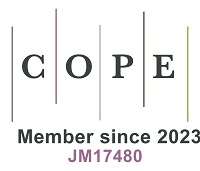REFERENCES
1. IPCC. Climate change and land: an IPCC special report on climate change, desertification, land degradation, sustainable land management, food security, and greenhouse gas fluxes in terrestrial ecosystems; 2019. Available from: https://www.ipcc.ch/srccl/ [Last accessed on 1 June 2023].
2. IPBES. The global assessment report of the intergovernmental science-policy platform on biodiversity and ecosystem services; 2019.
4. Udawatta RP, Walter D, Jose S. Carbon sequestration by forests and agroforests: a reality check for the United States. Carbon Footprints 2023;2:2.
5. Salmon G, Teufel N, Baltenweck I, van Wijk M, Claessens L, Marshall K. Trade-offs in livestock development at farm level: different actors with different objectives. Glob Food Sec 2018;17:103-12.
6. Wiedmann T, Minx JC. A definition of carbon footprint improving the environmental performance of australian construction projects view project AI for evidence synthesis in climate change view project; 2008. Available from: https://www.novapublishers.com/catalog/product_info.php?products_id=5999 [Last accessed on 1 June 2023].
7. van Noordwijk M, Pham TT, Leimona B, et al. Carbon footprints, informed consumer decisions and shifts towards responsible agriculture, forestry, and other land uses? Carbon Footprints 2022;1:4.
8. Mertz O, Leisz SJ, Heinimann A, et al. Who counts? Demography of Swidden cultivators in southeast Asia. Hum Ecol 2009;37:281-9.
9. Dressler WH, Wilson D, Clendenning J, et al. The impact of swidden decline on livelihoods and ecosystem services in Southeast Asia: a review of the evidence from 1990 to 2015. Ambio 2017;46:291-310.
10. Borah JR, Evans KL, Edwards DP. Quantifying carbon stocks in shifting cultivation landscapes under divergent management scenarios relevant to REDD. Ecol Appl 2018;28:1581-93.
11. Fearnside PM. Global warming and tropical land-use change: greenhouse gas emissions from biomass burning, decomposition and soils in forest conversion, shifting cultivation and secondary vegetation. Clim Chang 2000;46:115-58.
12. Lestrelin G, Giordano M. Upland development policy, livelihood change and land degradation: interactions from a Laotian village. Land Degrad Dev 2007;18:55-76.
13. Filho AA, Adams C, Murrieta RSS. The impacts of shifting cultivation on tropical forest soil: a review. Bol Mus Para Emílio Goeldi Ciênc hum 2013;8:693-727.
14. Mertz O, Bruun TB. Shifting cultivation policies in Southeast Asia: a need to work with, rather than against, smallholder farmers. In: Cairns M, editor. Shifting cultivation policies: Balancing environmental and social sustainability. UK: CABI; 2017. pp. 27-42.
15. Bauernschuster S, Pichler M, Ingalls M, Thongmanivong S, Gingrich S. Discursive and biophysical dimensions of land sparing policies in Laos: implications for greenhouse gas emissions and food security. Land Use Policy 2022;120:106293.
16. Ziegler AD, Phelps J, Yuen JQ, et al. Carbon outcomes of major land-cover transitions in SE Asia: great uncertainties and REDD+ policy implications. Glob Chang Biol 2012;18:3087-99.
17. Yuen JQ, Fung T, Ziegler AD. Review of allometric equations for major land covers in SE Asia: Uncertainty and implications for above- and below-ground carbon estimates. For Ecol Manag 2016;360:323-40.
18. Bruun TB, Berry N, de Neergaard A, Xaphokahme P, Mcnicol I, Ryan CM. Long rotation swidden systems maintain higher carbon stocks than rubber plantations. Agric Ecosyst Environ 2018;256:239-49.
20. Mertz O, Padoch C, Fox J, et al. Swidden change in Southeast Asia: understanding causes and consequences. Hum Ecol 2009;37:259-64.
21. Hett C, Castella J, Heinimann A, Messerli P, Pfund J. A landscape mosaics approach for characterizing swidden systems from a REDD+ perspective. Appl Geogr 2012;32:608-18.
22. Heinimann A, Mertz O, Frolking S, et al. A global view of shifting cultivation: Recent, current, and future extent. PLoS One 2017;12:e0184479.
23. Carmenta R, Vermeylen S, Parry L, Barlow J. Shifting cultivation and fire policy: insights from the Brazilian amazon. Hum Ecol 2013;41:603-14.
24. Dressler WH, Smith W, Kull CA, Carmenta R, Pulhin JM. Recalibrating burdens of blame: anti-swidden politics and green governance in the philippine uplands. Geoforum 2021;124:348-59.
25. FAO, IWGIA, AIPP. Shifting cultivation, livelihood and food security: new and old challenges for indigenous peoples in Asia; 2015. Available from: http://www.iwgia.org/iwgia_files_publications_files/0694_AIPPShifting_cultivation_livelihoodfood_security.pdf [Last accessed on 1 June 2023].
26. Delang CO, Weiyi X, Brooke B, Chun KP. The effect of fallow period length on the abundance and diversity of usable plant assemblages in shifting cultivation system (Swidden agriculture) in Northern Laos. Pol J Ecol 2016;64:350-6.
27. Rasmussen LV, Mertz O, Christensen AE, Danielsen F, Dawson N, Xaydongvanh P. A combination of methods needed to assess the actual use of provisioning ecosystem services. Ecosyst Serv 2016;17:75-86.
28. Mertz O, Bruun TB, Jepsen MR, et al. Ecosystem service provision by secondary forests in shifting cultivation areas remains poorly understood. Hum Ecol 2021;49:271-83.
29. Szott LT, Palm CA, Buresh RJ. Ecosystem fertility and fallow function in the humid and subhumid tropics. Agrofor Syst 1999;47:163-96.
30. Lawrence D. Biomass accumulation after 10-200 years of shifting cultivation in Bornean rain forest. Ecology 2005;86:26-33.
32. Mertz O, Birch-thomsen T, Elberling B, et al. Changes in shifting cultivation systems on small Pacific islands. Geogr J 2012;178:175-87.
33. Mcnicol IM, Berry NJ, Bruun TB, et al. Development of allometric models for above and belowground biomass in swidden cultivation fallows of Northern Laos. For Ecol Manag 2015;357:104-16.
34. Sommer R, Denich M, Vlek PL. Carbon storage and root penetration in deep soils under small-farmer land-use systems in the Eastern Amazon region, Brazil. Plant Soil 2000;219:231-41.
35. Palm CA, Swift MJ, Woomer PL. Soil biological dynamics in slash and burn agriculture. Agric Ecosyst Environ 1996;58:61-74.
36. Hepp CM, de Neergaard A, Bruun TB. Short-term fallow in extensive upland shifting cultivation systems of Northern Lao PDR: Its role in soil fertility restoration. Land Degrad Dev 2018;29:2911-9.
37. Hassink J. The capacity of soils to preserve organic C and N by their association with clay and silt particles. Plant Soil 1997;191:77-87.
38. Gulde S, Chung H, Amelung W, Chang C, Six J. Soil carbon saturation controls labile and stable carbon pool dynamics. Soil Sci Soc Am J 2008;72:605-12.
39. van Noordwijk M, Cerri C, Woomer PL, Nugroho K, Bernoux M. Soil carbon dynamics in the humid tropical forest zone. Geoderma 1997;79:187-225.
40. Bruun TB, de Neergaard A, Lawrence D, Ziegler AD. Environmental consequences of the demise in swidden cultivation in southeast asia: carbon storage and soil quality. Hum Ecol 2009;37:375-88.
41. Murty D, Kirschbaum MUF, Mcmurtrie RE, Mcgilvray H. Does conversion of forest to agricultural land change soil carbon and nitrogen? A review of the literature. Glob Chang Biol 2002;8:105-23.
42. Roder W, Phengchanh S, Keoboulapha B. Relationships between soil, fallow period, weeds and rice yield in slash and burn systems of Laos. Plant Soil 1995;176:27-36.
43. Lawrence D, Suma V, Mogea JP. Change in species composition with repeated shifting cultivation: limited role of soil nutrients. Ecol Appl 2005;15:1952-67.
44. Chan N, Takeda S, Suzuki R, Yamamoto S. Assessment of biomass recovery and soil carbon storage of fallow forests after swidden cultivation in the Bago Mountains, Myanmar. New Forests 2016;47:565-85.
45. Lungmuana, Choudhury BU, Saha S, et al. Impact of postburn jhum agriculture on soil carbon pools in the north-eastern Himalayan region of India. Soil Res 2018;56:615-22.
46. Terefe B, Kim D. Shifting cultivation maintains but its conversion to mono-cropping decreases soil carbon and nitrogen stocks compared to natural forest in Western Ethiopia. Plant Soil 2020;453:105-17.
47. Bruun TB, Ryan CM, de Neergaard A, Berry NJ. Soil organic carbon stocks maintained despite intensification of shifting cultivation. Geoderma 2021;388:114804.
48. Arunrat N, Sereenonchai S, Hatano R. Effects of fire on soil organic carbon, soil total nitrogen, and soil properties under rotational shifting cultivation in northern Thailand. J Environ Manag 2022;302:113978.
49. Kotto-same J, Woomer PL, Appolinaire M, Louis Z. Carbon dynamics in slash and burn agriculture and land use alternatives of the humid forest zone in Cameroon. Agric Ecosyst Environ 1997;65:245-56.
50. Aumtong S, Magid J, Bruun S, de Neergaard A. Relating soil carbon fractions to land use in sloping uplands in northern Thailand. Agric Ecosyst Environ 2009;131:229-39.
51. Kilawe CJ, Maliondo SM, Bruun TB, Birch-Thomsen J, Silayo DSA, Mertz O. The intensification of shifting cultivation in Tanzania: effects on soil and vegetation. In: Rukhsana Alam A, editor. Agriculture, environment and sustainable development. 2022; pp. 21-42
52. Palm CA, van Noordwijk M, Woomer P, et al. Carbon losses and sequestration following land use change in the humid tropics. In: slash and burn agriculture - the search for alternatives. Columbia University Press; 2005; pp. 41-63. Available from: https://www.researchgate.net/publication/303211824_Carbon_losses_and_sequestration_following_land_use_change_in_the_humid_tropics [Last accessed on 1 June 2023].
53. Silva JMN, Carreiras JMB, Rosa I, Pereira JMC. Greenhouse gas emissions from shifting cultivation in the tropics, including uncertainty and sensitivity analysis. J Geophys Res 2011;116:20.
54. van Leeuwen TT, van der Werf GR, Hoffmann AA, et al. Biomass burning fuel consumption rates: a field measurement database. Biogeosciences 2014;11:7305-29.
55. Lauk C, Erb K. Biomass consumed in anthropogenic vegetation fires: global patterns and processes. Ecol Econ 2009;69:301-9.
56. van der Werf GR, Randerson JT, Giglio L, et al. Global fire emissions and the contribution of deforestation, savanna, forest, agricultural, and peat fires (1997-2009). Atmos Chem Phys 2010;10:11707-35.
57. Seiler W, Crutzen PJ. Estimates of gross and net fluxes of carbon between the biosphere and the atmosphere from biomass burning. Clim Chang 1980;2:207-47.
58. Kurien AJ, Lele S, Nagendra H. Farms or forests? Understanding and mapping shifting cultivation using the case study of West Garo hills, India. Land 2019;8:133.
59. van Vliet N, Mertz O, Heinimann A, et al. Trends, drivers and impacts of changes in swidden cultivation in tropical forest-agriculture frontiers: A global assessment. Glob Environ Chang 2012;22:418-29.
60. Coomes OT, Cheng Y, Takasaki Y, Abizaid C. What drives clearing of old-growth forest over secondary forests in tropical shifting cultivation systems? Evidence from the Peruvian Amazon. Ecol Econ 2021;189:107170.
61. Dove MR. Smallholder rubber and swidden agriculture in Borneo: A sustainable adaptation to the ecology and economy of the tropical forest. Econ Bot 1993;47:136-47.
62. Wadley RL, Mertz O. Pepper in a time of crisis: smallholder buffering strategies in Sarawak, Malaysia and West Kalimantan, Indonesia. Agric Syst 2005;85:289-305.
63. Cramb RA. Land and longhouse: agrarian transformation in the uplands of sarawak. Copenhagen: NIAS Press; 2011. Available from: https://urn.kb.se/resolve?urn=urn:nbn:se:norden:org:diva-4045 [Last accessed on 1 June 2023].
64. Mertz O, Egay K, Bruun TB, Colding TS. The last Swiddens of Sarawak, Malaysia. Hum Ecol 2013;41:109-18.
65. Frolking S, Palace MW, Clark DB, Chambers JQ, Shugart HH, Hurtt GC. Forest disturbance and recovery: a general review in the context of spaceborne remote sensing of impacts on aboveground biomass and canopy structure. J Geophys Res 2009;114:91.
66. Martin DA, Llopis JC, Raveloaritiana E, et al. Drivers and consequences of archetypical shifting cultivation transitions. People Nat 2023;5:529-41.
67. Curtis PG, Slay CM, Harris NL, Tyukavina A, Hansen MC. Classifying drivers of global forest loss. Science 2018;361:1108-11.
68. Harris NL, Gibbs DA, Baccini A, et al. Global maps of twenty-first century forest carbon fluxes. Nat Clim Chang 2021;11:234-40.
69. Su M, Shi Y, Yang Y, Guo W. Impacts of different biomass burning emission inventories: simulations of atmospheric CO2 concentrations based on GEOS-Chem. Sci Total Environ 2023;876:162825.
70. Castella J, Lu J, Friis C, et al. Beyond the boom-bust cycle: an interdisciplinary framework for analysing crop booms. Glob Environ Chang 2023;80:102651.
71. Vieira ICG, de Almeida AS, Davidson EA, Stone TS, de Carvalho CJR, Guerrero JB. Classifying successional forests using Landsat spectral properties and ecological characteristics in eastern Amazônia. Remote Sens Environ 2003;87:470-81.
72. Leite MFA, Luz RL, Muchavisoy KHM, et al. The effect of land use on aboveground biomass and soil quality indicators in spontaneous forests and agroforests of eastern Amazonia. Agrofor Syst 2016;90:1009-23.
73. Gehring C, Denich M, Vlek PLG. Resilience of secondary forest regrowth after slash and burn agriculture in central Amazonia. J Trop Ecol 2005;21:519-27.
74. Broadbent EN, Almeyda Zambrano AM, Asner GP, et al. Integrating stand and soil properties to understand foliar nutrient dynamics during forest succession following slash and burn agriculture in the Bolivian Amazon. PLoS One 2014;9:e86042.
75. Aryal DR, De Jong BH, Ochoa-gaona S, Esparza-olguin L, Mendoza-vega J. Carbon stocks and changes in tropical secondary forests of southern Mexico. Agric Ecosyst Environ 2014;195:220-30.
76. Lawrence D, Foster D. Changes in forest biomass, litter dynamics and soils following shifting cultivation in southern Mexico: an overview. 2002. Available from: https://www.redalyc.org/pdf/339/33907103.pdf [Last accessed on 1 June 2023].
77. Urquiza-haas T, Dolman PM, Peres CA. Regional scale variation in forest structure and biomass in the Yucatan Peninsula, Mexico: Effects of forest disturbance. For Ecol Manag 2007;247:80-90.
78. Eaton JM, Lawrence D. Loss of carbon sequestration potential after several decades of shifting cultivation in the Southern Yucatán. For Ecol Manag 2009;258:949-58.
79. Leprun J, Grouzis M, Randriambanona H. Post-cropping change and dynamics in soil and vegetation properties after forest clearing: example of the semi-arid Mikea region (southwestern Madagascar). Comptes Rendus Geoscience 2009;341:526-37.
80. McNicol IM, Ryan CM, Williams M. How resilient are African woodlands to disturbance from shifting cultivation? Ecol Appl 2015;25:2320-36.
81. Kenzo T, Ichie T, Hattori D, Kendawang JJ, Sakurai K, Ninomiya I. Changes in above- and belowground biomass in early successional tropical secondary forests after shifting cultivation in Sarawak, Malaysia. For Ecol Manag 2010;260:875-82.
82. Chan N, Takeda S, Suzuki R, Yamamoto S. Establishment of allometric models and estimation of biomass recovery of swidden cultivation fallows in mixed deciduous forests of the Bago Mountains, Myanmar. For Ecol Manag 2013;304:427-36.
83. Van Do T, Osawa A, Thang NT. Recovery process of a mountain forest after shifting cultivation in Northwestern Vietnam. For Ecol Manag 2010;259:1650-9.
84. Frizano J, Vann DR, Johnson AH, Johnson CM, Vieira ICG, Zarin DJ. Labile phosphorus in soils of forest fallows and primary forest in the Bragantina region, Brazil. Biotropica 2003;35:2-11.
85. Johnson CM, Vieira IC, Zarin DJ, Frizano J, Johnson AH. Carbon and nutrient storage in primary and secondary forests in eastern Amazônia. For Ecol Manag 2001;147:245-52.
86. Lemos ECM, Vasconcelos SS, Santiago WR, de Oliveira MCM, Souza CMDA. The responses of soil, litter and root carbon stocks to the conversion of forest regrowth to crop and tree production systems used by smallholder farmers in eastern Amazonia. Soil Use Manag 2016;32:504-14.
87. Nounamo L, Yemefack M, Tchienkoua M, Njomgang R. Impact of natural fallow duration on topsoils characteristics of a Ferralsol of southern Cameroon. 2002. Available from: https://www.researchgate.net/publication/233420608 [Last accessed on 1 June 2023].
88. Yemefack M, Rossiter DG, Jetten VG. Empirical modelling of soil dynamics along a chronosequence of shifting cultivation systems in southern Cameroon. Geoderma 2006;133:380-97.
89. Ralte V, Pandey H, Barik S, Tripathi R, Prabhu SD. Changes in microbial biomass and activity in relation to shifting cultivation and horticultural practices in subtropical evergreen forest ecosystem of north-east India. Acta Oecologica 2005;28:163-72.
90. Montfort F, Nourtier M, Grinand C, et al. Regeneration capacities of woody species biodiversity and soil properties in Miombo woodland after slash and burn agriculture in Mozambique. For Ecol Manag 2021;488:119039.








